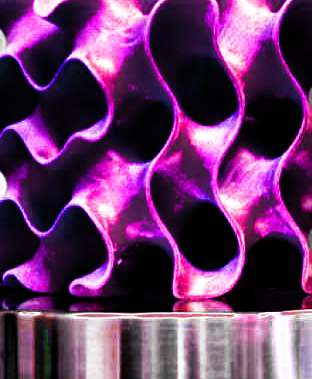Graphene growing new dimensions
 MIT has designed what it says is one of the strongest lightweight materials ever.
MIT has designed what it says is one of the strongest lightweight materials ever.
Engineers created the sponge-like material with a density of just 5 per cent, can have a strength 10 times that of steel.
It is made by compressing and fusing flakes of graphene, a two-dimensional form of carbon.
In its two-dimensional form, graphene is thought to be the strongest of all known materials, but researchers have had a hard time translating that two-dimensional strength into useful three-dimensional materials.
The crucial aspect of the new 3D forms comes from their unusual geometrical configuration, which suggests that similar strong, lightweight materials could be made from a variety of materials by creating similar geometric features.
The MIT team analysed the material's behaviour down to the level of individual atoms within the structure to produce a mathematical framework that very closely matches experimental observations.
The team was able to compress small flakes of graphene using a combination of heat and pressure, producing a strong, stable structure whose form resembles that of some corals and microscopic creatures called diatoms.
These shapes, which have an enormous surface area in proportion to their volume, proved to be remarkably strong.
In computational simulations, which mimic the loading conditions in the tensile and compression tests performed in a tensile loading machine, “one of our samples has 5 percent the density of steel, but 10 times the strength,” said researcher Zhao Qin.
The unusual geometric shapes that graphene naturally forms under heat and pressure look something like a spongy ball - round, but full of holes.
These shapes, known as gyroids, are so complex that “actually making them using conventional manufacturing methods is probably impossible,” researcher Markus Buehler says.
The team used 3-D-printed models of the structure, enlarged to thousands of times their natural size, for testing purposes.
For actual synthesis, the researchers say, one possibility is to use the polymer or metal particles as templates, coat them with graphene by chemical vapour deposit before heat and pressure treatments, and then chemically or physically remove the polymer or metal phases to leave 3-D graphene in the gyroid form.
The same geometry could even be applied to large-scale structural materials, they suggest.
For example, concrete for a structure such a bridge might be made with this porous geometry, providing comparable strength with a fraction of the weight. This approach would have the additional benefit of providing good insulation because of the large amount of enclosed airspace within it.
Because the shape is riddled with very tiny pore spaces, the material might also find application in some filtration systems, for either water or chemical processing.
The mathematical descriptions derived by this group could facilitate the development of a variety of applications, the researchers say.
More information is available here.








 Print
Print